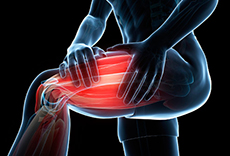Introduction:
Deep vein thrombosis, as the name suggests, is a thrombotic disease characterized by the formation of blood clots in the deep veins of the body. The most common sites are the femoral vein, popliteal vein, posterior tibial vein, iliac vein, and peroneal vein. DVT can also occur in other areas, such as the pelvis, arms, kidneys, and brain. Platelets are activated in response to trauma and blood flow turbulence, and form platelet plugs by connecting with fibrinogen to cause aggregation of surrounding platelets. Fibrinogen is then converted to fibrin, forming a stable platelet-fibrin thrombus, leading to blockage. Deep vein thrombosis is a serious disease that can lead to disability. There are three main risk factors called the Virchow triad. These factors are:
(i) Hypercoagulable state
(ii) Interruption of blood flow
(iii) Vascular endothelial cell damage
Other risk factors include paralysis, administration of exogenous hormones, and over 60 years of age. DVT can cause many complications, such as phlebitis, pulmonary embolism (PE), and recurrent DVT/PE. PE refers to the conversion of a thrombus (a clot that remains in place) into an embolus (separated thrombus), which passes through the inferior vena cava to reach the heart, then stays in one of the pulmonary arteries and causes occlusion, which can be fatal. The causes of deep vein thrombosis include long-term immobility, surgery, and malignant tumors. Most DVT will resolve spontaneously, and some may have no symptoms when the blood vessels are not completely blocked. The most common symptoms are pain, edema, local erythema and muscle cramps. According to data from the Centers for Disease Control and Prevention, in the United States, approximately 900,000 people are affected each year in the United States.
Signs and symptoms of deep vein thrombosis:
These depend on the location of the thrombus and the resulting complications. Symptoms vary, because some patients have no symptoms, while others may range from mild to severe.
1. Edema (specific symptoms)
2. Erythema (redness of the skin)
3. Dilated veins
4. Phlebitis (inflammation of veins)
5. Cyanosis (skin turns blue)
6. Local pain (if the blood clot is still stuck)
7. Muscle cramps

8. Seizures
9. Hypoxemia leads to hypertension and renal failure caused by renal dysfunction
10. Pleurisy chest pain, dyspnea (dyspnea), and hemoptysis (hemoptysis) in the event of a large area of pulmonary embolism
11. Elevated D-dimer
What can cause deep vein thrombosis:
There are many factors that can cause DVT. Some common factors include:
1. Hypercoagulable state:
(i) Lack of protein C and S

(ii) Antiphospholipid syndrome
(iii) Antithrombin III deficiency
(iv) Cancers that activate coagulation factors (especially gastrointestinal malignancies)
2. Interruption of blood flow:
(i) Prolonged immobility, such as paralysis, myasthenia gravis
(ii) Hypertension
3. Damage to endothelial cells:
(i) Trauma, such as surgery, autoimmune vasculitis and infection
(ii) Intravenous administration
(iii) Broken leg/arm
(iv) Diabetes
What to do with deep vein thrombosis:
Deep vein thrombosis is a preventable disease. Diagnosis is based on clinical features, D-dimer testing, and ultrasound (USG). The focus of treatment is to prevent thrombosis from increasing through the use of blood thinners (heparin, warfarin, and fondaparinux) and complications (such as pulmonary embolism and death). Streptokinase is used to dissolve clots. Non-steroidal anti-inflammatory drugs (NSAIDs) are used to fight pain. Surgery can be performed to prevent gangrene.




